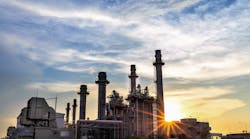The U.S. Environmental Protection Agency and Chrysler announced a cooperative agreement today in Ann Arbor, Michigan to develop and adapt hydraulic hybrid technology for the light-duty auto market. The goal of this partnership is to design a Chrysler minivan as a demonstration vehicle, using EPA’s patented technology. It is anticipated that the hydraulic hybrid technology will increase overall fuel efficiency 30-35 percent – 60 percent city driving — and reduce overall greenhouse gas emissions by 25 percent, according to EPA.
EPA’s hydraulic hybrid technology, developed in the agency’s lab in Ann Arbor, Michigan, is coming into use in large delivery and refuse trucks across the country. The hydraulic hybrid system captures and reuses the energy lost in braking through a hydraulic pressure vessel. The system can also turn off the engine when it is not needed and only fully use the engine when it can operate at peak efficiently.
The new partnership seeks to bring this same technology to passenger vehicles. A joint engineering team will design and integrate the hydraulic hybrid system into a minivan and test the demonstration vehicle in 2012. The minivan will feature a powertrain that replaces the automatic transmission.
EPA’s work for this project will take place at the National Vehicle and Fuel Emissions Laboratory, which holds more than 60 patents with 25 pending. All major international automakers have facilities in the Ann Arbor area to work closely with the lab.
Other key engineering partners working on this project include FEV of America. of Auburn Hills, Michigan and Southwest Research Institute of San Antonio, Texas and Ann Arbor.

